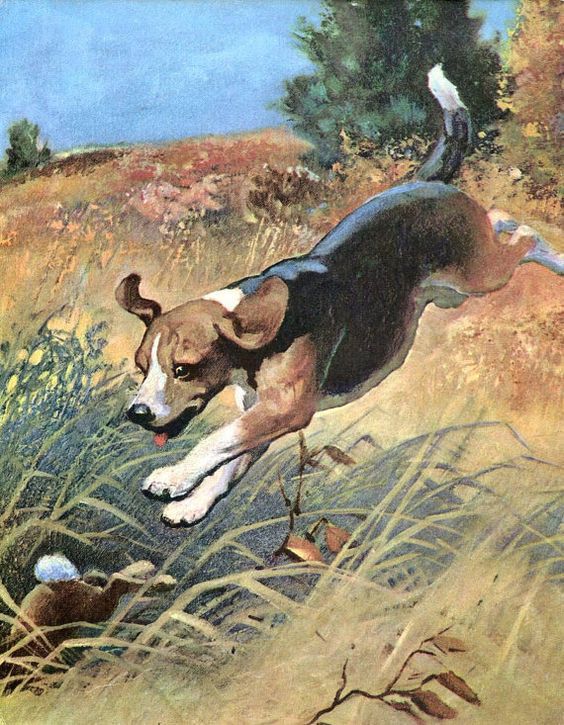
Show Beagles, as any fancier knows, are exhibited by size: 13 inches and 15 inches. They can be born in the same litter, and anyone wanting a specific sized hound should probably wait until the dog is older before selecting him or her.
But why are there two different sizes?
One must remember that Beagles were originally hunting dogs, and size mattered when it came to the hunt. Smaller dogs could easily manage cultivated land, but the strength of larger hounds was called upon when hunts took place on hilly land, or on big, open country where a bigger dog could cover more ground faster, and rabbits tended to run in a much larger circle. A larger hound was also useful when a lot of heather and brush made dogs have to work for longer periods of time. That said, smaller Beagles could better navigate briars.
Back in the day, the size of Beagles was a matter for each individual pack, and the decision as to what size dog was best for any area was largely determined by the nature of the country to be hunted. A size limit of 16 inches at the shoulder was imposed at the Hound Show held annually at Peterborough, but there were several packs in England where the working hounds were more than 16 inches in height.
At one time, Beagles came in four varieties! There was the medium Beagle, the dwarf (or lapdog) Beagle, the fox Beagle (essentially, a smaller, slower version of the Foxhound), and the rough-coated or terrier beagle which John Walsh writing as Stonehenge classified as a cross between any of the other varieties and one of the Scottish terrier breeds.
Image: Beagle print by Wesley Dennis from a 1950’s Children’s Dog Book Illustration
